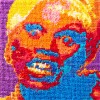Liberation Coffee House: Coffee and Biscotti That Helps the LGBTQ+ Community

Chef Nick Panepinto, Director of Culinary Training and Operations at Liberation Coffee House, is passionate about community, food and social enterprise. He shares how developing a culinary arts program that builds relevant skills for youth and older adults created a sense of welcome, warmth and love for the community.
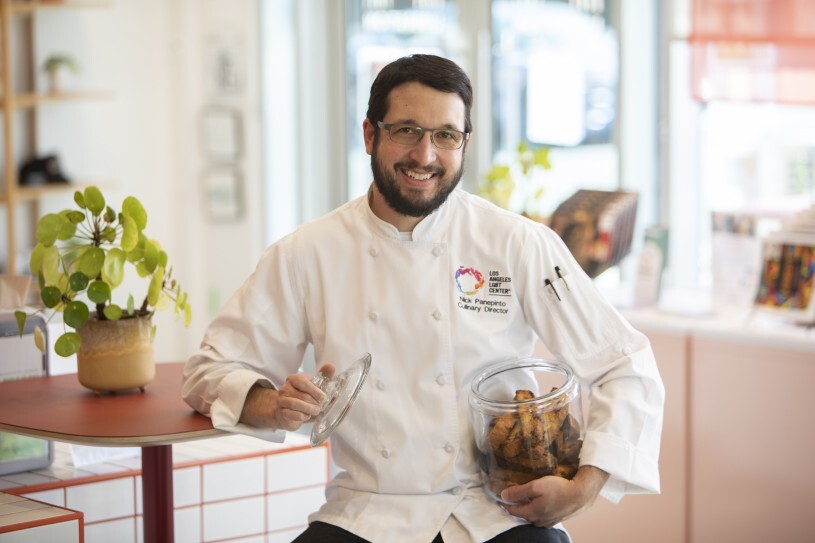
How did you get started in the kitchen?
I always grew up cooking with my family — we cooked with my grandparents and my parents. When I was considering college, I realized that I wanted to express my creative side and had an interest in business or food. When I went to the Culinary Institute of America (CIA), I felt like I found where I belonged. Since I graduated from the CIA, I’ve looked for ways to work with food both inside and outside the kitchen. I've done everything from luxury hotels to operations management for a vegan restaurant to menu oversight and coordination for 10,000 meals per day with an airline catering facility. Food is everywhere!

When I moved to Los Angeles with my partner, I wanted a career shift to explore the nonprofit space. At the same time, I was really struggling to feel like I was part of the community here in L.A. So I started volunteering at L.A. Kitchen, which unfortunately is now closed but was amazing. They provided a culinary training program for those aging out of foster care or recently incarcerated people. The organization repurposed food that would have otherwise gone to waste to provide nutritious meals for the community. It was here that I networked with an amazing group of people in Los Angeles. I have always said, when you’re in search of community, you go to where people love food — because you’ll find the right people! And so, when the Los Angeles LGBT Center opened, Chef Susan Feniger was interested in a culinary arts program here at the center, and I moved over to help start the program here.
What was the ethos behind opening the Liberation Coffee house?
We wanted to create a customer-facing area for the culinary arts training program at the Los Angeles LGBT Center. So we developed a space that would be casual and embrace the community. Liberation Coffee house is great because it is a social enterprise, so all the money we raise in the café goes back to supporting all the programming at the Los Angeles LGBT Center. It also gives jobs to students who graduated from our culinary arts training program.
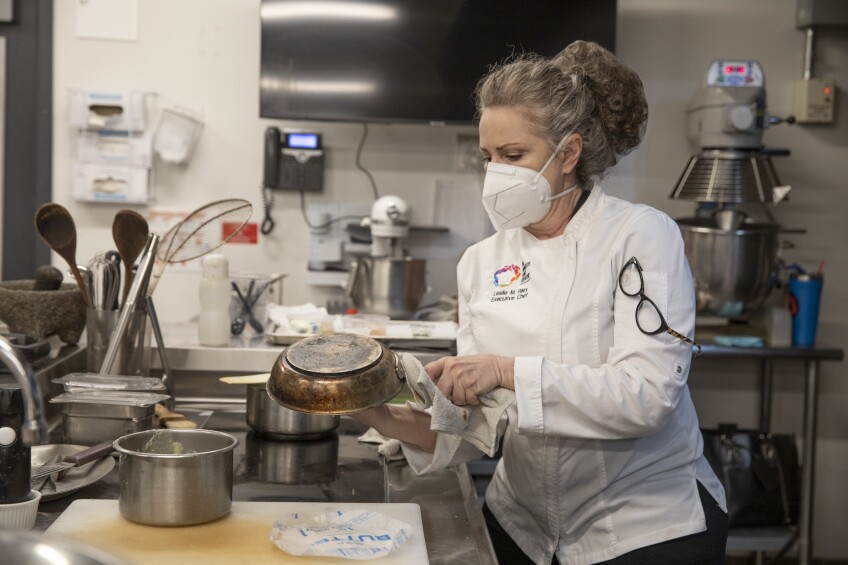




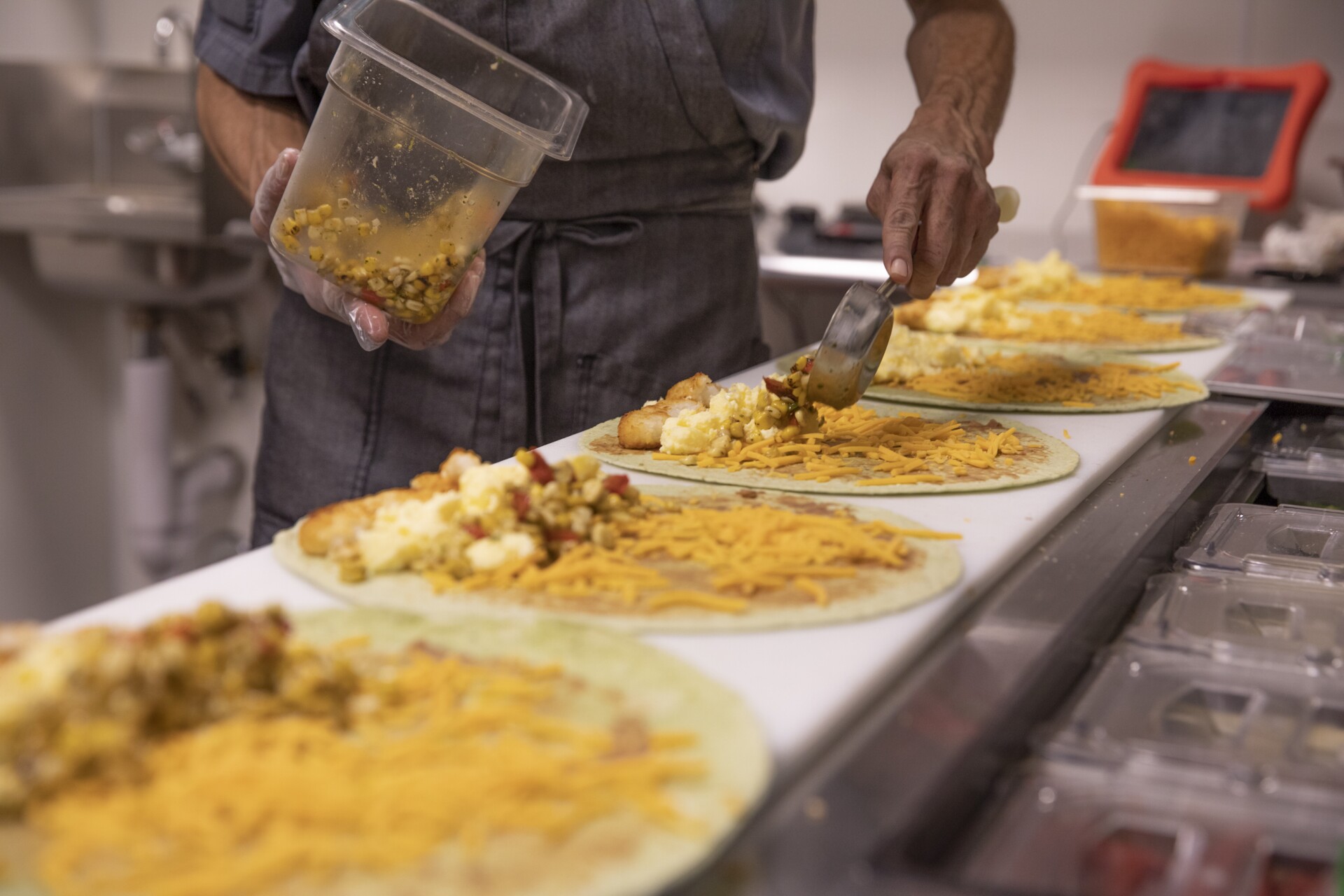
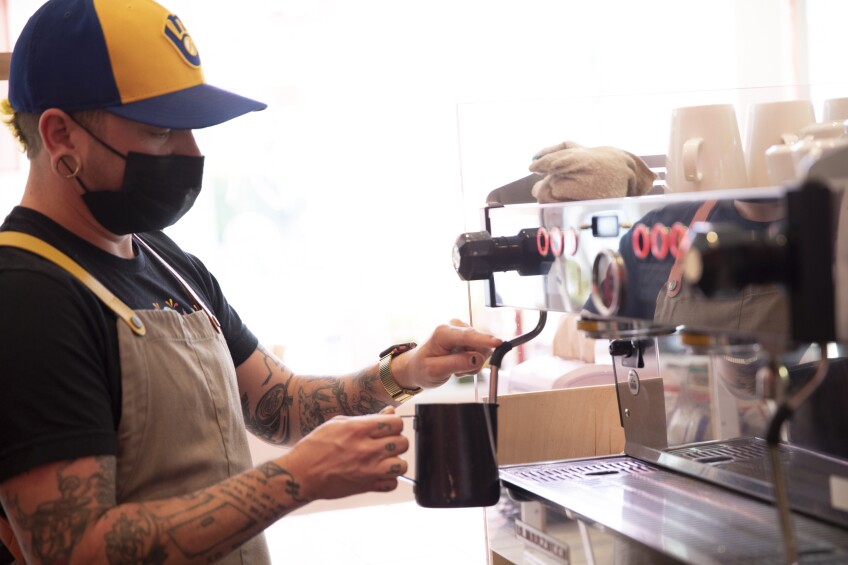

Another vital part of the café is that it allows the neighborhood to interact with the Los Angeles LGBT Center in a new way. The center has been in Hollywood for over 50 years now, but you didn't have access to the center unless you were specifically looking for services or visiting one of our galleries. Now, we have people in the apartments surrounding us or in the local businesses that visit us, and we are becoming more integrated with the community. I like to say it’s like the café is the new living room of the center.
Also, there aren’t many LGBTQ+ businesses left in the community. So this space becomes a gateway for people who might not know how to ask for support, a home or jobs. It is easy to look online, but you might not feel comfortable reaching out — so when people come into our café and meet our friendly staff, we often refer many people back to our services. The café is not only a place to sell delicious coffee, pastries, and food — we also try to create a safe space where everyone feels comfortable coming in for whatever they need.

It sounds like the training program builds a culture of welcome for anyone who walks through the cafés doors.
Yes, our Lead Cook and Baker, Andrew John Gonzalez, is the perfect example of our welcoming culture. Andrew was one of the seniors enrolled in our first class of the program. Like many older adults who entered the program, he was looking to reinvent himself and his skills after a successful career in the early part of his life. The youth in our program benefit from the level of maturity and life experience of the seniors and their mentorship.
Andrew specifically had such great attention to detail and a passion for food when he was in the program. We always say that love is the most important ingredient you can put into your food — and so when we talk about someone who’s going to put the love and passion into their food, we knew that Andrew had to work in the café.
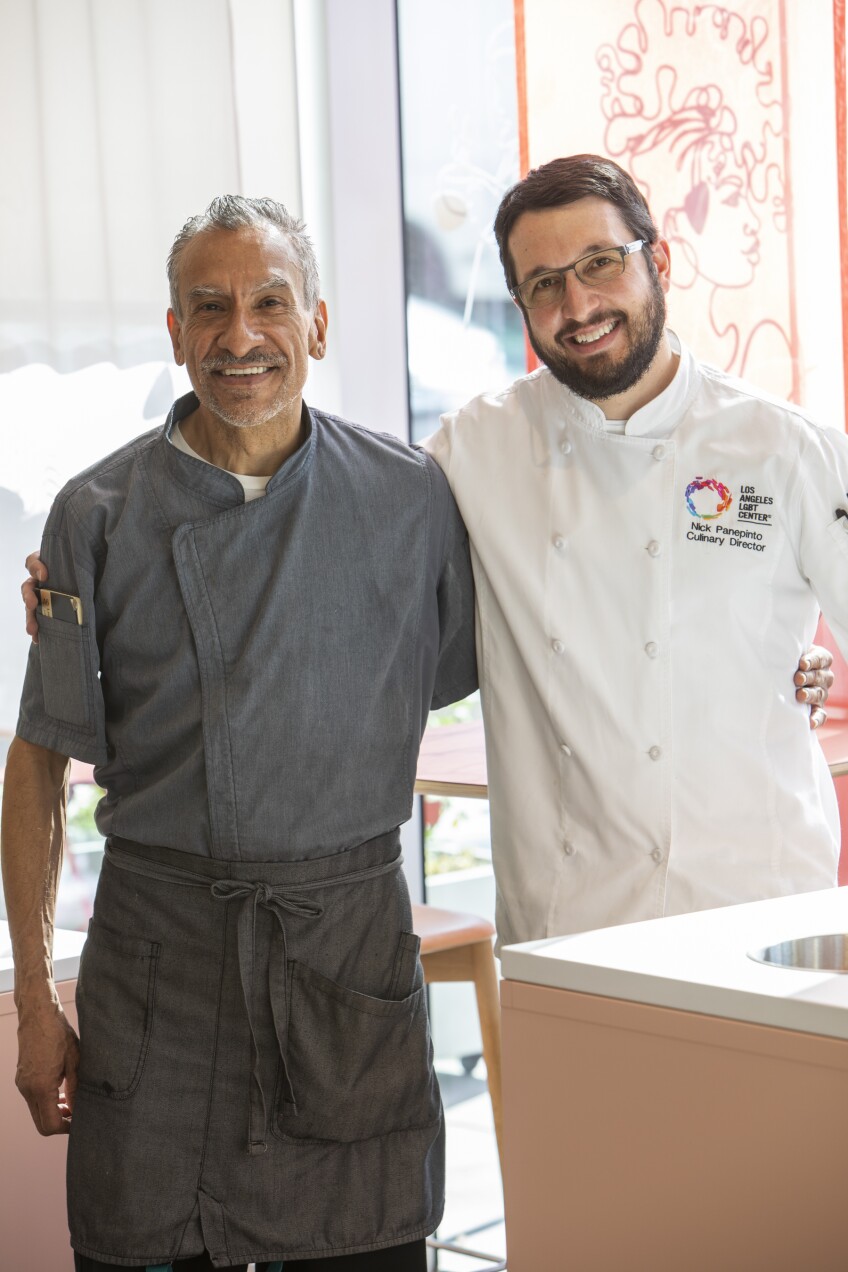
How does biscotti bind the community together?
The biscotti contributes to the café, creating a warm and welcoming space through its aroma. When we bake them, you can smell the biscotti when you open the doors and walk in. The almond flour creates a beautiful smell, and everyone in the space can sense that we bake with love.
Also, biscotti is very approachable — both to make and to eat. It’s not the most intricate pastry, so it’s very forgiving for our students to complete. I also love that they are affordable at two dollars apiece and something that everyone can purchase. When we priced the café [items], we wanted to make sure you could get a biscotti and coffee for five dollars. It was important because we felt that so many things are not affordable to people in the Hollywood area.
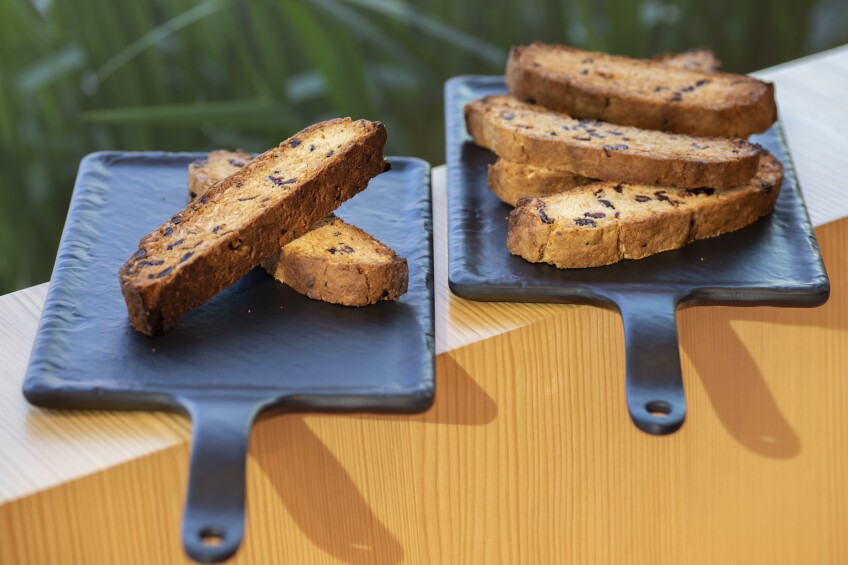
What is your favorite step in making biscotti?
I’ve talked about the smell; that is my favorite part, which comes after the second bake. After they are sliced and placed back in the oven, the toasting of the almond flour creates that smell. So when you see that golden color and get a whiff of the toasted flour, it is so satisfying.







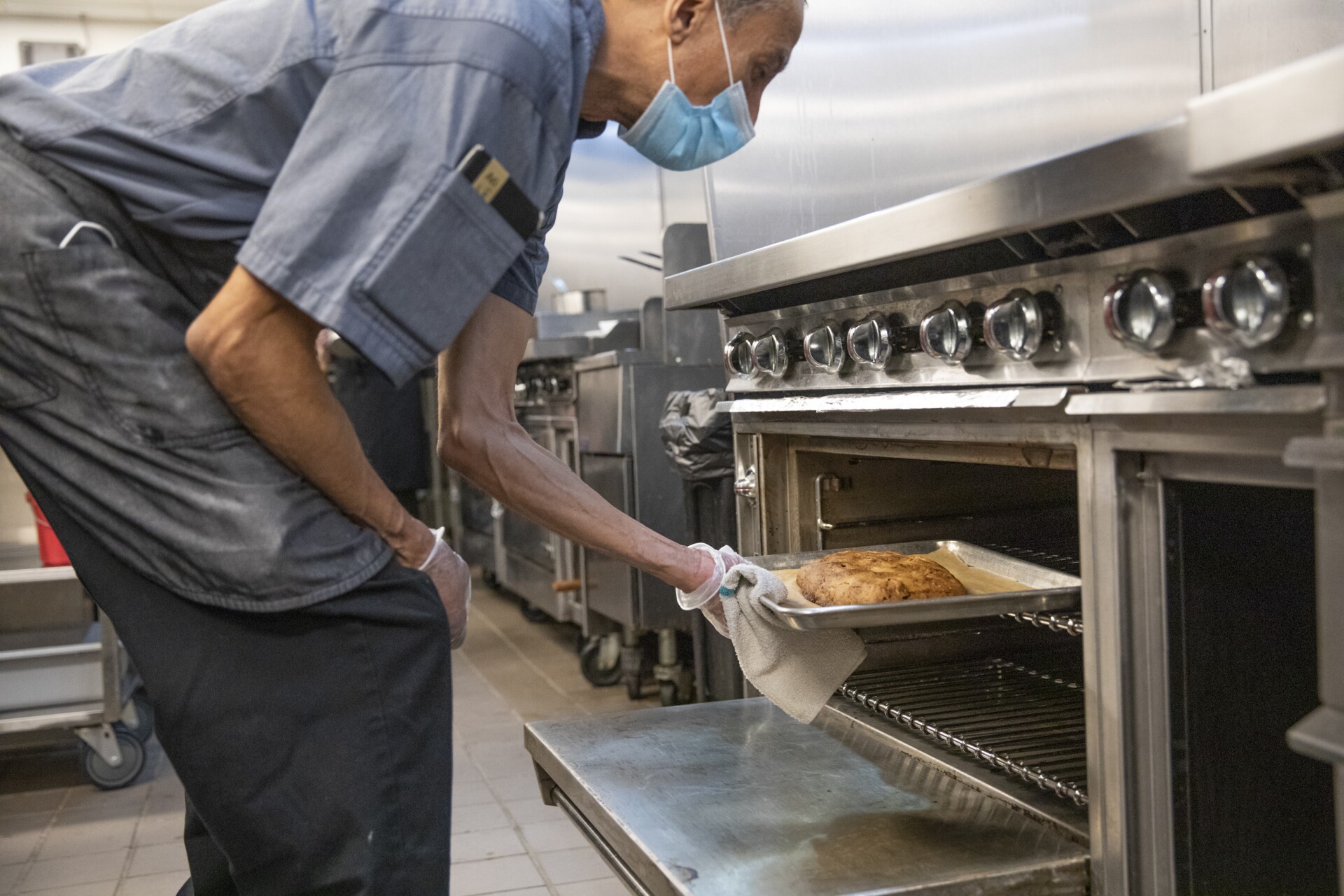
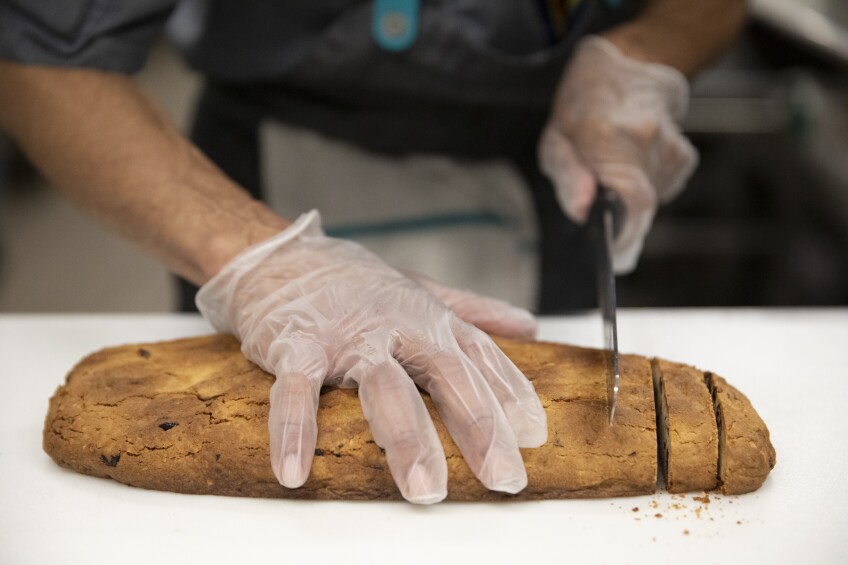



What more can you tell us about the community you serve?
While the Los Angeles LGBT Center focuses on the LGBTQ community, we also are about embracing all of Los Angeles. The social enterprise of the café and center is where all of this comes together. We feel it’s important for businesses to be part of the solution when we look at how we can make our community a better place to live. When done right, businesses can be an active part of the solution to helping end homelessness, get people jobs, and help with food insecurity in Los Angeles.
Also, while I wish we could bake every croissant and pastry at the café, we do outsource some of this work to Bakers Kneaded, a community-driven wholesale bakery based in East L.A. They use really high-quality California-grown ingredients but also commit to hiring locally.
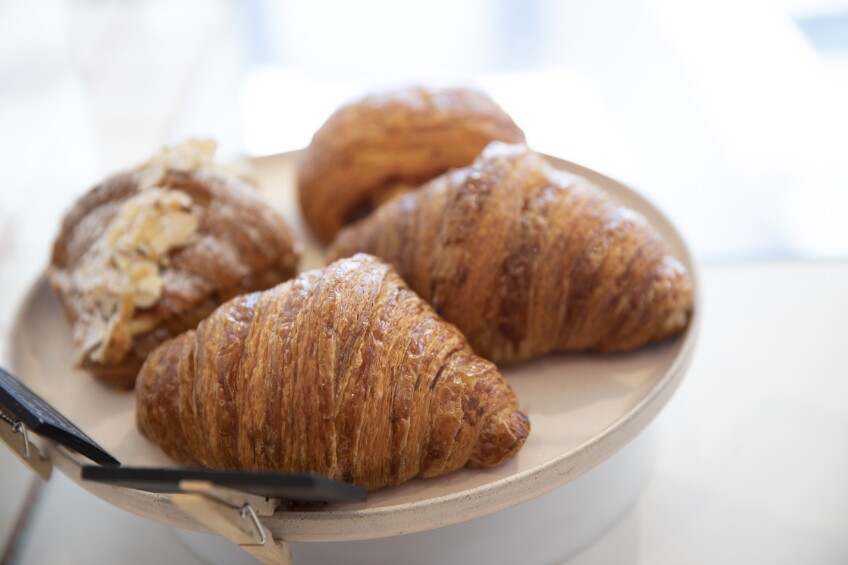
Explore more from Liberation Coffee House
To see what baking at Liberation Coffee House, go to liberationcoffee.lalgbtcenter.org or visit them in person at the Los Angeles LGBT Center’s Anita May Rosenstein Campus located at 6725 Santa Monica Boulevard, Los Angeles, CA 90038.
Share your L.A. Bread Stories
Do you know an L.A. breadmaker who lovingly connects to your community? Do you want to share your favorite experience at Liberation Coffee House? Join the conversation by tagging @NHMLA with #KneadedLA, and your story could be featured next!




